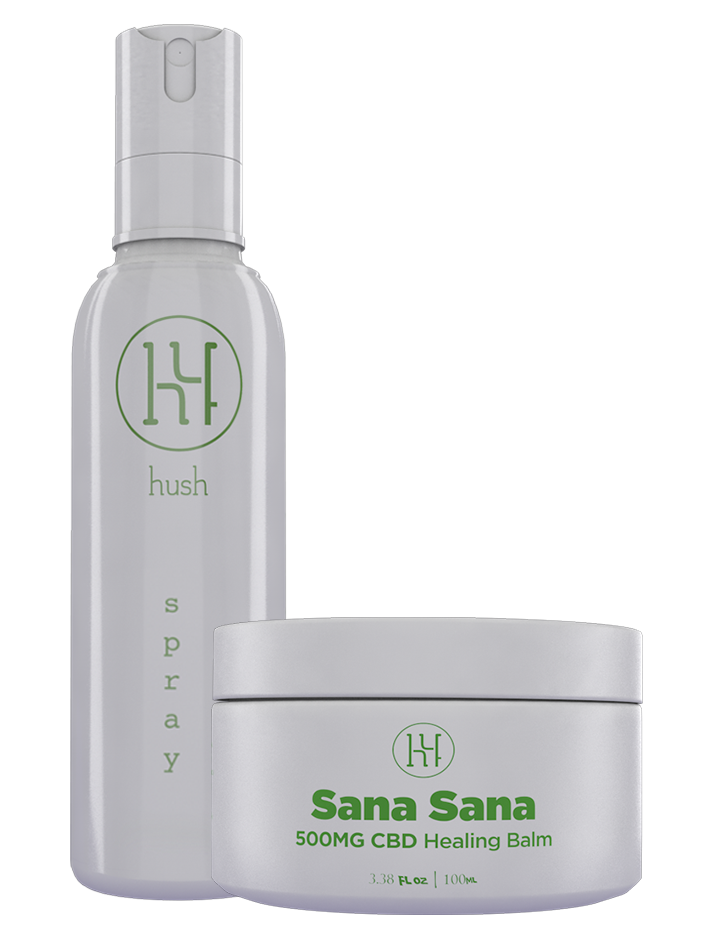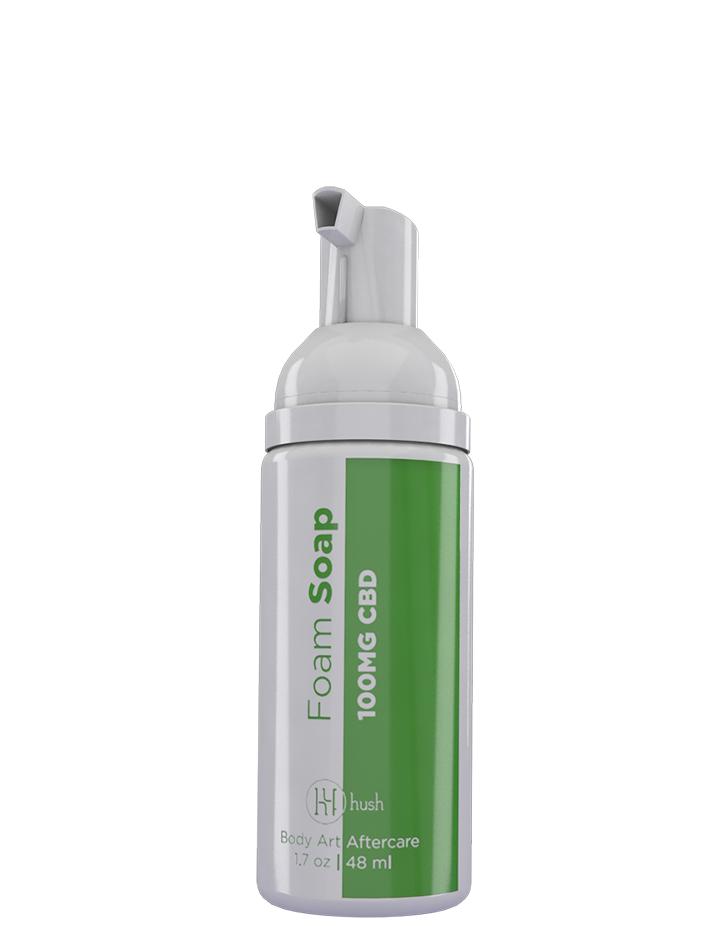If you just got back from your tattoo appointment a few hours ago and looked down at the dressing, you probably noticed a weird bubble of fluid building up. This little bubble is called a tattoo ink sack.
If your tattoo artist didn’t tell you what to expect, you might be a little freaked out. Don’t worry. That was supposed to happen, and it’s all part of the healing process.
What Is a Tattoo Ink Sack?
A tattoo is very traumatic to your skin. Your skin will heal just fine if you follow your tattoo artist’s instructions and use high-quality tattoo aftercare products, but it’s very vulnerable during the healing process.
When your body senses an open wound, it tries to heal it. It sends out a bunch of fluid to the area. This transparent yellowish liquid is called plasma and contains the healing factors your body makes to protect itself.
Plasma is one of two parts of your blood. It’s the water and proteins that make your blood mobile. The red part of your blood is the blood cells themselves. You might see a little tinge of red in the plasma, but the liquid is mostly straw-colored.
As your tattoo leaks plasma, it might get stained by the ink. This can change the color of the plasma, but it won’t damage its healing properties.
A tattoo ink sack is a buildup of ink-stained plasma fluid underneath the clear protective sheet (called Saniderm) that your tattoo artist applied to your tattoo at the end of your appointment. It might look like a big blister, but it’s not your skin. It’s just the fluid trapped between your tattoo and the transparent barrier.
Is There Something Wrong With My Tattoo?
Probably not. If you’ve never seen an ink sack, it might look like you have a blister on your skin or like all the ink is running out of your tattoo.
This is almost never the case. If you’re concerned, you should always ask your tattoo artist. They’ll likely tell you that it’s normal.
An ink sack is only concerning when it seems like you’re bleeding excessively. It’s normal for the leakage to take on a pinkish tint, but if your tattoo doesn’t contain red or pink ink and the leakage is red, call your tattoo artist.
What If I Don’t Have a Protective Sheet?
If you don’t have a protective sheet and it looks like an ink sack is forming, that’s a blister. This process is called tattoo bubbling, and it’s normal for some people.
Water or plasma can get trapped beneath the surface of your tattoo as it heals. In most cases, cleaning and drying your tattoo can make the bubbles go away. You shouldn’t let them hang out for too long.
If you’re having issues with tattoo bubbling, check for signs of infection. You're probably alright if the area isn’t red, swollen, warm to the touch, or collecting fluid that isn’t mostly clear.
You should still call your tattoo artist to be sure and see a doctor if necessary. Remember: if you don’t follow your aftercare instructions, your tattoo can get infected. Make sure you’re doing what you’re supposed to do.
Why Do I Need To Keep My Tattoo Covered?

The ink sack might look weird or gross, but it’s perfectly fine. Tattoos are pretty, but until they heal, they’re pretty, open wounds. Many unpleasant things can happen to open wounds when you don’t properly care for them.
Saniderm is breathable. Although it won’t let the fluid out, it will let air in. Your skin is getting everything it needs to heal properly, and your ink sack might play a role in the healing process.
The Saniderm sheet over your tattoo keeps it clean. Your artist was trained to keep the tattoo process as sterile as possible.
By covering your tattoo, you aren’t allowing any germs in. It’s as clean as it was when your tattoo artist finished your session.
The protective sheet keeps your tattoo moist (sorry, we know you hate that word), preventing scabbing. If your tattoo scabs up, the ink will gather in the scab and fall right out. By allowing it to heal wet, the body will close the wound without a scab and keep all of your ink intact.
There’s another practical purpose to that ink sack. Think about where all that inky stuff would have gone if it wasn’t trapped in the sack. It would have leaked all over your clothes, car seats, and bed sheets.
It would run down your body all day. Isn’t that a little grosser than an ink sack?
Can I Prevent an Ink Sack?
You can’t really prevent an ink sack. If your body releases fluid to heal an open wound, that’s just what it does. It’s not a good idea to do anything that would reduce your body’s natural healing abilities.
You can only keep the protective sheet off, which isn’t a good idea. If you leave your tattoo exposed, you increase the risk of infection or improper healing. It’s better to deal with the fluid buildup for a day or two than to wreck your tattoo.
How Do I Remove the Ink Sack?
You can remove the sheet and clean your tattoo when your tattoo artist tells you to. Most artists recommend waiting at least 24 hours after your tattoo to change the sheet, but you might need to change it sooner if it starts leaking or the ink sack gets unmanageably big. Give your artist a call if you aren’t sure what to do.
Don’t pop the ink sack. It may seem tempting to go in with a pin or another small sharp object to control the flow of the fluid, but it’s a bad idea. Any object you use will introduce bacteria into a wet environment, encouraging the bacteria to breed.
You also run the risk of accidentally stabbing your fresh tattoo. Fight the temptation. You’re stronger than that.
Removing a protective sheet with an ink sack underneath it can get messy. You want to keep your tattoo positioned over the sink because the fluid will spill out the second you take the sheet off.
Start by loosening the sheet at the top, and pull it straight down. It shouldn’t hurt as bad as ripping off a bandage. It may need a little coaxing, and if it does, try rolling it as you go. Let the ink spill into the drain.
Follow the rest of your aftercare instructions exactly as your tattoo artist recommended. Make sure your tattoo is fully patted dry at the end of the process.
You want to avoid excess water getting trapped between your tattoo and its dressing. It’s okay if it’s your body’s own plasma, but water from anywhere else could potentially contaminate your tattoo.
Cover it up with a new sheet if your artist wants you to. Most tattoo artists recommend using Saniderm sheets for a few days. If the new sheet forms an ink sack, it will likely be much smaller than the first sheet. It may not form an ink sack at all.
It’s normal for your tattoo to weep some fluid for two or three days following a tattoo. You should call your tattoo artist if it’s still leaking on the third day, especially if it’s enough to create an ink sack.
What If My Ink Sack Starts Leaking?
If your ink sack leaks, take the Saniderm off and follow your aftercare instructions. You may not need to wash your tattoo or apply any topical products if you just got your tattoo done a few hours ago.
Replace it with a new sheet of Saniderm if your tattoo artist sent you home with sheets and instructions on how to apply them.
When in doubt, call your artist. You aren’t bugging them. They would much rather answer your questions and help your tattoo heal beautifully than leave you with a damaged tattoo or have to do a touch-up.
Healing with HUSH

Once you’re past the pesky “ink sack” stage of aftercare, you need to follow up. It takes two to three weeks for a tattoo to heal fully, and the deeper layers of your skin may need as long as six months to regenerate. Keep taking good care of your tattoo.
Hush Anesthetic’s tattoo aftercare products are designed to reduce itching, stinging, and redness on your healing tattoo. Our healing spray, CBD healing balm, and CBD foam soap are a dream team for tattoo aftercare. We’ve bundled our collections together, so all you need to do is grab them and go. Take care of your art with HUSH.
Sources:
What is Plasma? | Plasma Protein Therapeutics Association
Recognizing and Treating Wound Infection | Saint Luke's Health System




